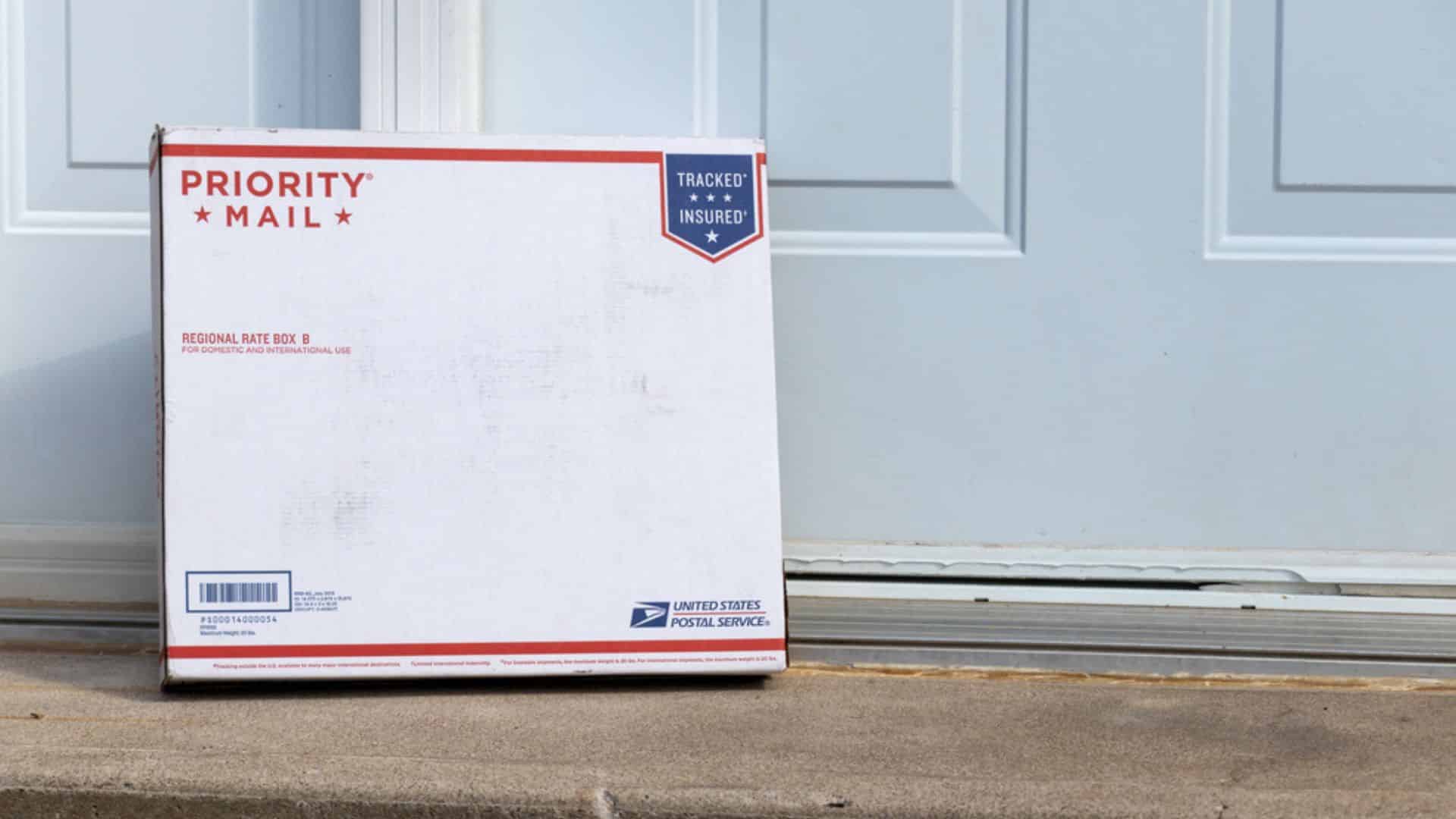There’s a lot to wonder about USPS shipping weight costs.
Despite all of the calculators and charts available, the lack of a quick and easy answer is frustrating.
It stands to reason that larger packages cost more, and it costs more to ship them farther, but it takes some digging to figure out the details.
I’ve summarized the digging part so you can compare the cost of shipping via USPS with other carriers.
No more guesswork — confidently mail your package knowing you’ve paid just what you owe, no more and no less!
Contents
How Much Does It Cost to Ship a Package With USPS?
USPS shipping weight costs do not have to be a mystery only uncovered by postal employees when you ship a package.
The USPS has many resources available to help you calculate what it will cost you to ship your package.
Does USPS Charge by Weight or Size?
The USPS charges by weight and always rounds up when it calculates shipping.
So if your package weighs 1 pound and 1 ounce, unfortunately, you’ll need to pay the (up to) 2-pound rate.
You can weigh your package yourself at home.
A kitchen scale works just as well as any postal scale. Just be careful that you understand how to use it accurately.
If you miscalculate postage, your package might be returned to you or the recipient may be fined.
How Does USPS Calculate Shipping Weight?
See this shipping size guide to see what the USPS means by length, width, height, and girth.
This is also measurable at home with a tape measure, but the diagram is helpful for visualization.
USPS Shipping Calculator
You can use the official USPS shipping calculator to make matters easier.
This is a good idea because, without it, you’ll need to reference various charts to figure out the cost of shipping.
How To Use the USPS Shipping Calculator
The USPS shipping calculator will require you to know the size and weight of your package.
You’ll also need to know the 5-digit zip codes you’re mailing both to and from.
In most cases, you’ll simply need to fill in that information in the proper fields and select “calculate price based on shape and size” below the fields on the first page.
Depending on the dimensions of your package and how quickly you need it shipped, you might also want to consider the flat-rate options available by choosing “view flat rate boxes.”
These are typically more expensive rates, but it could be worth it if you’re shipping very heavy items and/or you need them delivered sooner than first-class mail can provide.
If you need to mail your package internationally, choose a different country from the dropdown at the top of the first page.
Note that this is the destination country, not where you’re mailing from.
The only difference in the calculator steps for an international package is you must also give an estimate of the value of the package.
How Much Does USPS Shipping Cost Per Pound?
USPS shipping costs depend not only on weight but also on the distance the package needs to travel.
You’ll want to consult the full USPS price list to find a precise estimate.
To use the price list as written, you’ll need to calculate the postal zone, which is the USPS shorthand system for distance.
How To Use the Postal Zone Calculator
Follow the inline link above to access the calculator.
Then, you’ll need to pick the second tab, “Get Zone for Zip Code Pair.”
You’ll just need to fill in the 5-digit zip codes for your package (where it’s headed and where it’s from) and shipping date to calculate the postal zone.
Per Pound Priority Mail Express
Priority Mail Express is the fastest and most expensive shipping option.
The lightest parcels under ½ pound and shipped locally or within zones 1 and 2 costs about $27 to ship at the time of writing.
After ½ pound, the rates increase in 1-pound increments.
For packages that are more than ½ a pound but less than 1 pound, the price starts at $27.40.
For every additional pound less than 5, the cost increases by about $0.40–0.50 per pound.
The cost to ship a package between 5 and 6 pounds jumps up in proportion to the distance.
This means a 4.9-pound package shipped locally costs $29.25, and a 5.1-pound package shipped locally costs $32.20, but in Zone 9, those same two packages ship for $107.55 and $117.75, respectively.
The cost increases as the zone does because higher zone numbers indicate larger distances.
So shipping a package from Minnesota to Florida might be considered Zone 7, which costs a minimum of $38.10 (at less than ½ a pound) and a maximum of $480.80 (at between 69 and 70 pounds).
Other weight ranges follow the same patterns, with a sharper increase in weight for each additional 5 pounds.
Per Pound Priority Mail
Priority mail is a little slower and less expensive than Priority Mail Express.
It follows the same patterns as the latter as far as how the rates increase by weight, but the costs are lower.
For example, the cheapest possible Priority Mail cost (less than one pound and local or Zone 1 or 2) is only $8.70.
The Minnesota-to-Florida example used in the previous section would cost a minimum of $10.90 (less than one pound) and a maximum (between 69 and 70 pounds) of $148.05.
Overall, Priority Mail costs ¼ to ⅓ the cost of Priority Mail Express for the same weight and distance.
Per Pound First Class
First-class mail technically only applies to packages up to 13 ounces.
This is a little less than a pound, which is 16 ounces.
Any heavier than that, and you’ll need to use USPS Retail Ground rates.
These very light packages will cost you anywhere from $4.50 to $7.65, depending on weight and postal zone.
This is the cheapest option available, but you can only select this option for lightweight parcels and you must realize that it will take longer to arrive than it would via Priority Mail or Priority Mail Express.
Per Pound Retail Ground
USPS retail ground shipping costs look much like Priority Mail rates for short distances, but they don’t increase as quickly as the distance/zone increases.
In other words, the difference in cost between Priority Mail and Retail Ground is almost nothing if you’re not shipping a package very far, but Retail Ground becomes far cheaper if you’re shipping something across the country.
Flat Rate
Flat-rate shipping can be a great option if you find that your exact weight and distance combination exceeds the price of the flat-rate box.
You can use the same full price list we’ve been using to determine the price ranges in the other sections to see the flat-rate price.
For example, if you can see by the listed dimensions that your item will fit in a small flat-rate Priority Mail box for $9.45, you can then compare that number to the cost in the Priority Mail table based on weight and zone.
For most packages over 1 pound, a flat rate box will save you money, in this case.
Another way to determine if a flat-rate box is cheaper is to use the USPS shipping price calculator twice for the same package, checking both the rates for a flat rate box and the dimensions of the box you already have.
How Does Flat-rate Shipping Work?
If you’ve found that the flat rate is cheaper for you (using the methods listed above), you have two options.
You can either use USPS packaging and not worry about measurements, or take the time to check that your package meets flat rate requirements.
Then, you pay the flat rate. Pay the shipping cost online or at your local post office, and you’re good to go!
See the USPS flat rate chart for prices and recommended sizes.
Wrapping Up
Hopefully, this has helped clear up confusion about USPS shipping weight cost.
The shipping calculator is an excellent online tool available for free.
If you want to compare rates by weight or service without rerunning the calculator, try checking the price list PDF charts.
If these tools don’t answer all your questions, feel free to comment below.
Shipping a package doesn’t need to be difficult — or expensive!


